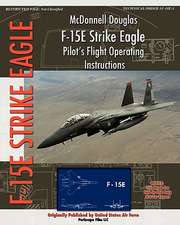Airplane Upset Training Evaluation Report
Autor National Aeronautics and Administrationen Limba Engleză Paperback
Preț: 347.48 lei
Nou
Puncte Express: 521
Preț estimativ în valută:
66.50€ • 69.17$ • 54.90£
66.50€ • 69.17$ • 54.90£
Carte disponibilă
Livrare economică 24 martie-07 aprilie
Preluare comenzi: 021 569.72.76
Specificații
ISBN-13: 9781505569087
ISBN-10: 1505569087
Pagini: 578
Dimensiuni: 216 x 279 x 30 mm
Greutate: 1.32 kg
Editura: CREATESPACE
ISBN-10: 1505569087
Pagini: 578
Dimensiuni: 216 x 279 x 30 mm
Greutate: 1.32 kg
Editura: CREATESPACE

























